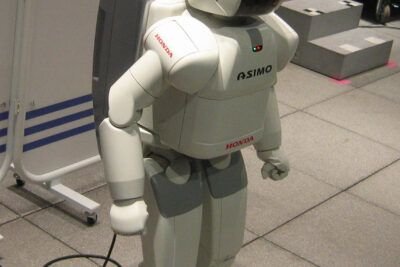
Plastic Use: Weighing the Pros and Cons of this Controversial Material

Plastic has become an integral part of our daily lives, with its versatile properties making it ideal for a wide range of applications. From packaging to construction, transportation to healthcare, plastic has revolutionized various industries. However, this ubiquitous material is not without its drawbacks. The environmental impact of plastic waste, along with concerns about its potential health effects, has sparked a global debate about the use and disposal of plastic.
In this article, we will explore the pros and cons of plastic use. We will delve into the advantages that plastic brings to different sectors, such as its durability, flexibility, and cost-effectiveness. Additionally, we will examine the negative consequences of plastic, including its contribution to pollution, the challenges of recycling, and the potential harm it may pose to human health. By weighing the pros and cons, we aim to provide a balanced perspective on the complex issue of plastic use and its impact on our society and environment.
Index
What are the advantages of using plastic?
Plastic has become an integral part of our daily lives due to its numerous advantages. One of its main benefits is durability. Plastic products can withstand wear and tear, making them long-lasting and resistant to damage. This is especially beneficial for items that need to withstand harsh conditions or frequent use, such as water bottles or food containers.
Another advantage of plastic is its versatility. It can be molded into various shapes and sizes, allowing for endless possibilities in terms of design and functionality. This makes plastic a popular choice for packaging materials, as it can be customized to fit the specific needs of different products.
Plastic is also lightweight, which makes it convenient for transportation and reduces fuel consumption during shipping. Its lightweight nature also makes it easier for consumers to carry and handle plastic products on a daily basis.
In addition, plastic is a cost-effective material. It is relatively inexpensive to produce compared to other materials, making it accessible and affordable for a wide range of industries and consumers. This affordability also translates to lower prices for consumers, which can be a significant factor in purchasing decisions.
Furthermore, plastic is moisture-resistant, which makes it ideal for storing and protecting items that are sensitive to moisture, such as electronics or perishable goods. It also helps to prevent spoilage and extend the shelf life of certain products.
Lastly, plastic is a versatile material that can be recycled and reused. While there is an ongoing debate about the environmental impact of plastic waste, recycling initiatives have been implemented to reduce the amount of plastic that ends up in landfills or oceans. Recycling plastic can help conserve resources and reduce energy consumption.
It is important to note that while plastic offers many advantages, there are also significant concerns and drawbacks associated with its use. It is crucial to weigh the pros and cons before making decisions about plastic consumption and explore alternative materials and solutions that are more sustainable and environmentally friendly.
What are the disadvantages of using plastic?

While plastic has undoubtedly revolutionized many aspects of modern life, it also comes with a list of significant disadvantages. One of the most concerning issues is its impact on the environment. Plastic is not biodegradable, meaning it can persist in the environment for hundreds of years. This leads to pollution of land, waterways, and oceans, causing harm to wildlife and ecosystems.
Furthermore, the production of plastic contributes to greenhouse gas emissions and relies heavily on fossil fuels. The extraction and processing of these non-renewable resources have negative implications for climate change and air pollution.
Another disadvantage of plastic use is its potential to leach harmful chemicals into food and beverages. Certain types of plastic, such as those containing BPA (bisphenol A), have been linked to health issues such as hormonal disruptions, reproductive problems, and increased risk of certain cancers.
In addition to the environmental and health concerns, the disposal of plastic also poses challenges. Many plastic items end up in landfills or are incinerated, both of which have their own negative consequences. Landfills contribute to the release of greenhouse gases and can contaminate soil and water, while incineration releases toxic pollutants into the air.
Overall, the disadvantages of using plastic highlight the need for more sustainable alternatives. Governments, businesses, and individuals must work together to reduce plastic consumption, promote recycling and waste management initiatives, and invest in research and development of eco-friendly materials.
Is plastic really causing harm to the environment?
Plastic has become an integral part of our daily lives, but its extensive use has sparked a heated debate about its impact on the environment. Supporters argue that plastic has revolutionized various industries and provided convenience to our lives, while critics contend that its production, disposal, and long-term effects pose significant threats to our planet. Let's take a closer look at the arguments for and against the use of plastic.
Arguments for the Use of Plastic
Plastic offers numerous benefits that have contributed to its widespread use. One of the key arguments in favor of plastic is its versatility. It can be molded into various shapes and sizes, making it suitable for a wide range of applications across industries such as packaging, construction, healthcare, and transportation.
Additionally, plastic is lightweight, which reduces transportation costs and energy consumption. Its durability ensures that products made from plastic have a longer lifespan, helping to reduce the need for frequent replacements.
Proponents of plastic also highlight its cost-effectiveness. Compared to alternative materials, plastic is often more affordable to produce, which can lead to lower prices for consumers.
Arguments against the Use of Plastic
While there are undeniable advantages to using plastic, there are also significant concerns about its environmental impact. One of the primary arguments against plastic is its contribution to pollution, particularly in our oceans and waterways. Plastic waste, such as single-use bottles and packaging, often ends up in the ocean, posing a threat to marine life and ecosystems.
Another issue is the long decomposition time of plastic. Many plastic products take hundreds of years to break down, leading to the accumulation of waste in landfills and natural environments.
Furthermore, the production of plastic involves the extraction of fossil fuels and the release of greenhouse gases, contributing to climate change. The manufacturing process also consumes substantial amounts of energy and water resources.
Lastly, there are concerns about the health effects of plastic, particularly when it comes to food and beverage containers. Certain types of plastic may leach harmful chemicals into the products they contain, potentially posing risks to human health.
As society becomes more aware of the environmental and health impacts of plastic, there is growing support for finding alternatives and reducing plastic consumption. Many individuals and organizations advocate for recycling, reusable products, and the use of biodegradable materials to mitigate the negative effects of plastic.
Ultimately, the debate surrounding the use of plastic is complex, with valid arguments on both sides. Balancing the convenience and benefits of plastic with its environmental and health concerns requires a collective effort from individuals, industries, and governments to find sustainable solutions.
Are there any alternatives to plastic?
While plastic has become an integral part of our daily lives, its negative impact on the environment cannot be ignored. The production and disposal of plastic waste contribute to pollution, habitat destruction, and harm to wildlife. As a result, people are increasingly looking for alternatives to plastic that are more sustainable and eco-friendly.
One of the main arguments against the use of plastic is its non-biodegradable nature. Plastic takes hundreds of years to break down, leading to the accumulation of waste in landfills and oceans. This poses a significant threat to ecosystems and marine life. Additionally, the production of plastic requires the extraction of fossil fuels, contributing to greenhouse gas emissions and climate change.
On the other hand, there are arguments in favor of plastic that highlight its convenience and versatility. Plastic is lightweight, durable, and cost-effective, making it suitable for various applications. It is used in packaging, construction, healthcare, and many other industries. Plastic also plays a crucial role in preserving food and reducing food waste.
However, it is important to consider the long-term consequences of our dependence on plastic. The environmental impact of plastic pollution is undeniable, and finding alternatives is essential for a sustainable future. Fortunately, there are several alternatives to plastic that are gaining popularity.
One popular alternative is biodegradable plastics, which are designed to break down more quickly than traditional plastics. These materials are made from renewable resources such as cornstarch or vegetable oils. While biodegradable plastics may offer a temporary solution, they still have limitations and require the right conditions to break down properly.
Another option is to reduce the use of plastic altogether by opting for reusable alternatives. This includes using reusable bags, water bottles, and food containers. By adopting a zero-waste lifestyle, individuals can significantly reduce their plastic consumption and minimize their environmental impact.
Furthermore, innovation and technological advancements are paving the way for new materials that could replace plastic in various industries. For example, researchers are exploring the use of plant-based materials, such as algae or mushroom-based packaging, as sustainable alternatives.
In conclusion, the use of plastic has both advantages and disadvantages. While plastic offers convenience and versatility, its negative impact on the environment cannot be ignored. As we become more aware of the consequences of plastic pollution, it is crucial to explore alternatives that are more sustainable and eco-friendly. By reducing our reliance on plastic and embracing innovative solutions, we can work towards a cleaner and healthier planet.
Frequently Asked Questions
1. Is plastic harmful to the environment?
Yes, plastic is harmful to the environment as it does not biodegrade easily and can take hundreds of years to decompose.
2. Can plastic be recycled?
Yes, plastic can be recycled. However, not all types of plastic are recyclable, and the recycling process can be complex and costly.
3. What are the alternatives to plastic?
Some alternatives to plastic include glass, metal, paper, and biodegradable materials such as bamboo or cornstarch-based plastics.
4. How can I reduce my plastic consumption?
You can reduce your plastic consumption by using reusable bags, bottles, and containers, avoiding single-use plastic items, and opting for products with minimal packaging.
 The Truth Unveiled: Is the Kraken Real or Not?
The Truth Unveiled: Is the Kraken Real or Not? Pros and Cons of Tattoos: Exploring the Upsides and Downsides
Pros and Cons of Tattoos: Exploring the Upsides and DownsidesSi leer artículos parecidos a Plastic Use: Weighing the Pros and Cons of this Controversial Material puedes ver la categoría Science and Technology.






Leave a Reply